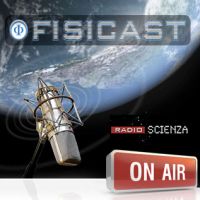|
Description:
|
|
Recurrent Neural Networks (RNNs) and Word2Vec. ## Resources - Overview Articles: ** Unreasonable Effectiveness of RNNs (http://karpathy.github.io/2015/05/21/rnn-effectiveness/) `article:easy` ** Deep Learning, NLP, and Representations (http://colah.github.io/posts/2014-07-NLP-RNNs-Representations/) `article:medium` ** Understanding LSTM Networks (http://colah.github.io/posts/2015-08-Understanding-LSTMs/) `article:medium` - Stanford cs224n: Deep NLP (https://www.youtube.com/playlist?list=PL3FW7Lu3i5Jsnh1rnUwq_TcylNr7EkRe6) `course:medium` (replaces cs224d) - TensorFlow Tutorials (https://www.tensorflow.org/tutorials/word2vec) `tutorial:medium` (start at Word2Vec + next 2 pages) - Deep Learning Resources (http://ocdevel.com/podcasts/machine-learning/9) ## Episode Deep NLP pros - Language complexity & nuances ** Feature engineering / learning ** Salary = degree*field, not + ** Multiple layers: pixels => lines => objects ** Multiple layers of language - Once model to rule them all; E2E models Sequence vs non-sequence - DNN = ANN = MLP = Feed Forward - RNNs for sequence (time series) RNNs - Looped hidden layers, learns nuances by combined features - Carries info through time: language model - Translation, sentiment, classification, POS, NER, ... - Seq2seq, encode/decode Word2Vec (https://www.tensorflow.org/tutorials/word2vec) - One-hot (sparse) doesn't help (plus sparse = compute) - Word embeddings ** Euclidean distance for synonyms / similar, Cosine for "projections" . king + queen - man = woman ** t-SNE (t-distributed stochastic neighbor embedding) - Vector Space Models (VSMs). Learn from context, predictive vs count-based - Predictive methods (neural probabilistic language models) - Learn model parameters which predict contexts ** Word2vec ** CBOW / Skip-Gram (cbow predicts center from context, skip-gram context from center. Small v large datasets) ** DNN, Softmax hypothesis fn, NCE loss (noise contrastive estimation) - Count-based methods / Distributional Semantics - (compute the statistics of how often some word co-occurs with its neighbor words in a large text corpus, and then map these count-statistics down to a small, dense vector for each word) ** GloVe ** Linear algebra stuff (PCA, LSA, SVD) ** Pros (?): faster, more accurate, incremental fitting. Cons (?): data hungry, more RAM. More info (http://blog.aylien.com/overview-word-embeddings-history-word2vec-cbow-glove/) - DNN for POS, NER (or RNNs) |
 More
More
 Religion & Spirituality
Religion & Spirituality Education
Education Arts and Design
Arts and Design Health
Health Fashion & Beauty
Fashion & Beauty Government & Organizations
Government & Organizations Kids & family
Kids & family Music
Music News & Politics
News & Politics Science & Medicine
Science & Medicine Society & Culture
Society & Culture Sports & Recreation
Sports & Recreation TV & Film
TV & Film Technology
Technology Philosophy
Philosophy Storytelling
Storytelling Horror and Paranomal
Horror and Paranomal True Crime
True Crime Leisure
Leisure Travel
Travel Fiction
Fiction Crypto
Crypto Marketing
Marketing History
History

.png)
 Comedy
Comedy Arts
Arts Games & Hobbies
Games & Hobbies Business
Business Motivation
Motivation


